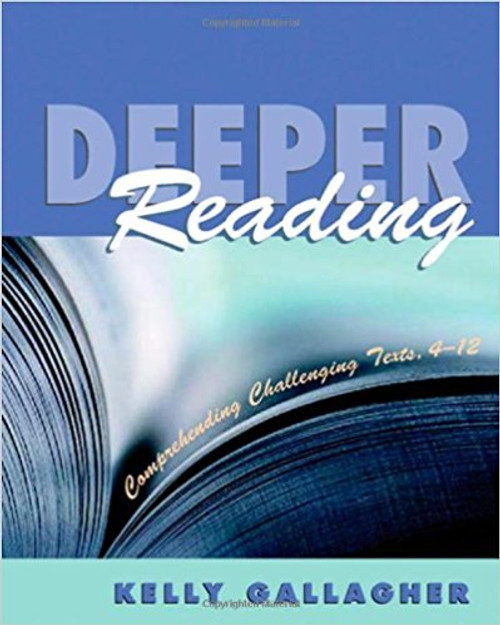Product Description
What it really means to “read closely.”
What could Fern Arable, Jay Gatsby, and Winston Churchill possibly have in common? They all need masterful teachers to help students revel in their complexity. And Nancy Frey and Doug Fisher are just the two mentors to help you make that happen.
Call it close reading, call it deep reading, call it analytic reading—call it what you like. The point is, it’s a level of understanding that students of any age can achieve with the right kind of instruction. In Rigorous Reading, Nancy and Doug articulate an instructional plan so clearly, and so squarely built on research, that teachers, schools, and districts need look no further.
The 5 Access Points Toward Proficiency
- Purpose & Modeling: Teachers think aloud to demonstrate critical thinking and how good readers always know why they are reading.
- Close & Scaffolded Reading Instruction: Teachers engage students in repeated readings and discussions, with text-dependent questions, prompts, and cues to help students delve into an author’s ideas.
- Collaborative Conversations: Teachers orchestrate collaborative learning to get students in the habit of exercising their analytical thinking in the presence of their peers.
- An Independent Reading Staircase: Teachers artfully steer students to more challenging books, with strategic bursts of instruction and peer conferences to foster metacognitive awareness.
- Performance: Teachers offer feedback and assessments that help students demonstrate understanding of text in authentic ways and plan instruction based on student understanding.
There’s more . . . Also included are illustrative classroom video clips available via QR codes along with an online Facilitator’s Guide with PowerPoints--making Rigorous Reading the only resource a teacher, school, or district needs to seriously stretch students’ capacity to read and comprehend text.
Key Features
Like many excellent teaching methodologies grounded in research (reader response theory, guided reading, etc) the gradual release of responsibility model has been widely implemented, but often poorly. Many teachers lack a deep understanding and models deep for doing this effectively. Fisher & Frey have a gift for breaking down information into explicit, manageable steps, with clear examples that will inform teachers' own implementation.
Chapters will focus on GRR as it specifically plays out in ELA in the 6-12 classroom.
- Chapter 1: Will introduce the model and explain why it is essential to deep, transferable learning
- Chapter 2: What are the ingredients of a focused lesson? Establishing purpose & modeling
- Chapter 3: What does guided instruction look like? Cues, prompts, and questions
- Chapter 4: Collaborative Learning: The importance of Consolidating Thinking with Peers
- Chapter 5: Beyond "Do it yourself:" Independent Learning tasks for Students
- Chapter 6: How to Implement a GRR Model







